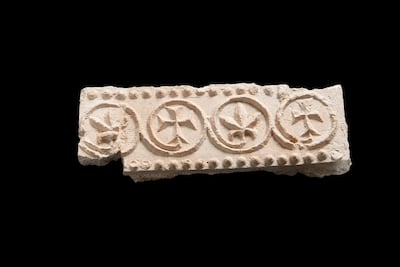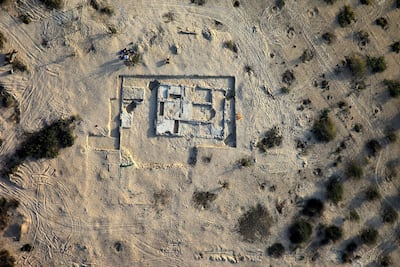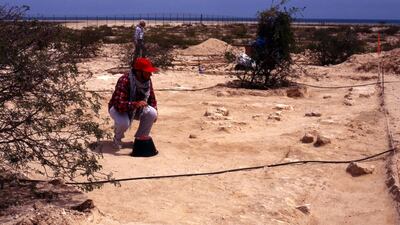The Christian monks that established a monastery on Sir Bani Yas around 600AD survived for more than a century. There was no violent end: the spread of Islam combined with the unwillingness of some members to follow the rules of their own church contributed to their decline. The sand of 1,400 years then covered what remained of their church, tower bell and houses. It seemed lost to time. But soon, the sand was going to give up its secrets.
It was a small group of enthusiasts that first learned something lay under the sands at the site. The President, Sheikh Zayed, in 1991 invited members of the Emirates Natural History Group to visit Sir Bani Yas to study the plants and wildlife there. It was on this trip that pottery sherds were unearthed dating to the 1st millennium AD. Very little archaeological work had been undertaken on the islands at this time. Sheikh Nahyan bin Mubarak, the current Minister of Tolerance, took this news to Sheikh Zayed who proposed a survey of Sir Bani Yas.
This took place in the spring of 1992 with the UAE Air Force providing logistical support. Clear evidence of buildings was detected at the site which would later be confirmed as a monastery, along with decorated plaster and more pottery sherds.

It was this 1992 survey that led Sheikh Zayed to start the Abu Dhabi Islands Archaeological Survey. Peter Hellyer, then chairman of the ENHG, became co-ordinator and more surveys of the Sir Bani Yas site were undertaken. These were directed by Dr Geoffrey King of London University but the real breakthrough came in 1995.
“Site director Dr Joe Elders picked up a small fragment of plaster and turned it over to discover a fine Christian cross,” recalls Mr Hellyer.
In the years since, several digs have taken place at the site revealing more and more about the lives these monks led, how they survived and coexisted.
“This is information we cannot get from documentary evidence,” said Dr Richard Cuttler, an archaeologist at the Department of Culture and Tourism Abu Dhabi, which is now leading the work.
“Now we have a wide range of scientific techniques — like radio carbon dating. We can slice through bones of fish to see what season they were caught in. We can do analysis on pottery to see what they are cooking.”

Now the monastery has been reopened and made more accessible. But it is worth remembering the long road to its discovery and the early work undertaken by those pioneers.
“I remember well the discovery of the first plaster cross in 1995, which proved that we had found the UAE’s first early Christian site and I remember as well the way in which we informed Sheikh Zayed of the discovery and his response,” says Mr Hellyer.
“He was delighted — he saw it as an important part of the country’s history and heritage and also as evidence of a religious tolerance that survives until today.”


